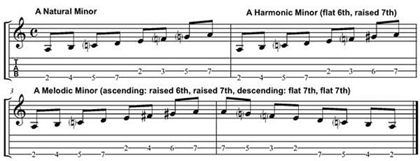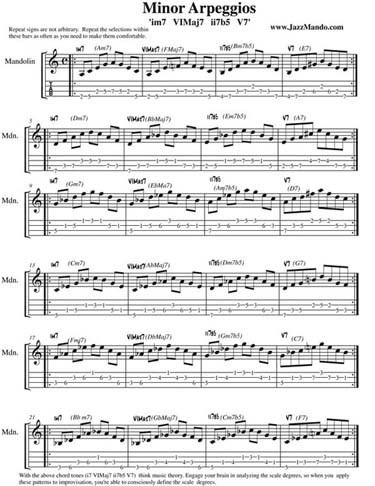« December 2013 |
Main
| February 2014 »
 January 30, 2014 | Jason Anick on effective soloing
January 30, 2014 | Jason Anick on effective soloing
We had the opportunity to discuss with young Berklee string legend and John Jorgensen sideman, Jason Anick in a previous interview, the significance of music theory in soloing. The following is an excerpt of one of the Mandolin Cafe questions:
Ted Eschliman. I've asked the question of you in the April 2012 Mandolin Sessions finale about your approach to improvising, constructing good solos, and you mentioned the "equilibrium of intention and spontaneity." What do your credit your own understanding of the jazz language in chord structure, phrasing, swing, and feel? How much of what you plays is scales and arpeggios vs. just "blowing?"
Jason Anick. I have spent many years studying and dissecting classic solos from jazz greats like Charlie Parker, Sonny Stitt, John Coltrane, and Stephane Grappelli. The first thing I listen for and try to emulate is their feel. Then I study their harmony and try to understand what sounds good over the chord changes and why. With each solo I learn, I increase my musical toolbox and continue to form my own musical voice.
I supplement transcribing and listening with frequent scale and arpeggio studies. My goal is to learn all the modes, arpeggio inversions, and chords up the neck in what I call "mapping out the fretboard." All the notes are there, you just have to find and develop a relationship with them. I am always looking to discover new ways of approaching chords and harmony.
When I am improvising, I try not to think too much and instead let my inner inspiration and musical ear take over in hopes of constructing a cohesive musical statement. There are moments when I even surprise myself with what I improvise, and that makes it all worthwhile. The way I see it is the more thinking you do in the practice room, the less you have to do when you are on stage.
Read the rest of the interview: 10 Questions For Jason Anick
Read about Jason's February 2014 CD release: Jason Anick; Tipping Point

Further:
Compose yourself. Story Arcs
Compose yourself. Antecedent/Consequent thinking
Don Stiernberg on the "Big Picture" of improvising
Intentional Improvisation
More Appropriate
Posted by Ted at 11:30 AM
 January 23, 2014 | The esoteric Minor Scale
January 23, 2014 | The esoteric Minor Scale
The following is an excerpt from our December 2011 Mandolin Sessions article tackling the minor scale. As you read, it's easy to get bogged down in the cerebral details, and really the point of the topic is ultimately application will default to context. It's good to know the ins and outs, but when you get down to it, what sounds good is always the answer.
Ask us what time it is, we tell you how to build a watch.
Three scales.
The simplest form of Minor Scale is the Natural Minor. It deviates from a Major Scale in that the 6th and 7th scale degrees are lowered a half step, or m6th and m7th. An A Major would include an F# and G#. In the A Natural Minor you'd have F natural and G Natural.
Here's the problem. Harmonically, the G natural does not pack the gravity of the magic half step drive. When you're spelling out the dominant V7 chord in the key (E G# B D), unless you raise that G to a G#, you have an awkward clash between the G and G#. The solution is always to raise the 7th scale degree, and if nothing else is changed, you have the Harmonic Minor Scale.
If you play it through, you'll notice (and finger) an awkward 3 half-step gap (3 fret) between the 6th and 7th scale degree. Playing through it melodically can give it a characteristic ethnic sound (Klezmer, for example), but in some music it doesn't flow as well as when you raise the 6th scale degree.
That's your solution (raising the 6th), but there's a problem when you have the F Major Chord based on the 6th scale degree (F, A, C, E). Again, you'd have a half-step clash with the F natural and F#. The compromise: raise them going in one direction (F#, G#), lower them going in the other (F, G).

The thing is, this is all pretty cerebral. There's no rule in real life you always raise going up, and always lower going down, because real music jumps around, skips, and turns. What do you do then?
We have to remember that scales are exercises, mere snippets of music and an incarnation of theory, not always application. You can drill these three forms all you want, but we'd argue you can waste valuable practice time mastering these. You would probably be better off spending time with yet another form of minor, the modal scale known as Dorian.
Read more, Minor League: Making the most of Minor Keys
Follow up: Spelling out the Chords. Melodically.

Posted by Ted at 8:07 AM
 January 16, 2014 | Aaron Weinstein on chord melody
January 16, 2014 | Aaron Weinstein on chord melody
From our February 2011 Mandolin Cafe interview, "10 Questions with Aaron Weinstein"
Ted Eschliman: We are all fascinated by the finesse and flourish of your chord melody arrangements. How do you approach these, as melody with chords, or the harmonic structure first and working the melody into those chords
Aaron Weinstein: It helps me to think of chord-melody in terms of the melody and accompaniment being two independent entities instead of the chord and the melody always being one big block voicing. There's all sorts of things you can do to add interest in the way you break up the chords or re-harmonize or work in some kind of moving bass line. There's really an endless stream of possibilities and everyone thinks differently so I'm always curious to see how other mandolinists go about this. I wish there were more folks doing it. But my approach to chord melody isn't new at all! Guitarists have been playing this way for decades. I'm just trying to catch up!
Ted Eschliman: As a follow-up to the previous question, with the mandolin being mostly a soprano instrument, how do you approach communicating the bass notes of the chord make-up in your chord melody arranging?
Aaron Weinstein: I don't think the range matters if you treat the notes appropriately. Just look at the master, J.S. Bach and the way he wrote for solo violin. It's completely self-contained. That's the gold standard.
The former child prodigy and first call New York swing fiddler brings up a crucial point in the best way to attack chord/melody. Many think in terms of voicing inversions of the chord that keep the melody constantly in the top voice. Block chord, block chord, block chord, etc.
Super if you are capable, especially in the context of ensemble when you have texture and rhythmic variation to spice up the arrangement. If it's just solo mandolin, this can get tedious after while. We like Aaron's approach in that you are thinking two things at once, integrating a specific harmonic accompaniment underneath the melody. It's far more interesting.
If you want to attempt this, take a lead sheet with melody and chords, master the melody, master the chords and THEN try to combine. If you're chord inversions aren't interesting, the arrangement won't be.
Listen to some terrific examples from Aaron:
Aaron Weinstein mandolin:  I Must Be Dreaming I Must Be Dreaming
Aaron Weinstein mandolin:  That Warm Feeling That Warm Feeling
Purchase Aaron's recent CD: "Lucky Day" Amazon | iTunes

Posted by Ted at 8:38 AM
 January 9, 2014 | Interview with Jamey Aebersold
January 9, 2014 | Interview with Jamey Aebersold
"She's not a jazzer. She doesn't have a big record collection. She doesn't drink coffee and she's not grumpy..."
What started out as one book and an LP record would turn out to be a jazz pedagogy dynasty. Jamey Aebersold, educator and publishing legend was recently interviewed about how he created an environment where somebody with virtually no jazz experience could take small steps through a little music theory and some Play Along tracks and become street proficient in improvisation.

We think the world of the Aebersold series, having mentioned his body of work a number of times the last decade. Much of our own approach to applying it to mandolin was "borrowed" from several of his earliest books. We recommend supercharging your individual practice sessions with his theme Play Along tracks. There's no better way to prepare yourself for a real jazz jam.
"You learn licks and you learn patterns and things, and you weave them together with the spontaneity that comes on the spur of the moment."
Video Link: Interview with Jamey Aebersold

Purchase Jamey Aebersold Jazz on iTunes
Purchase Jamey Aebersold Jazz on Amazon MP3
Many great books to choose, but our personal recommendations:
All Time Standards V25DS
Jam Session V34DS
Night and Day V51DS
Yesterdays (Jerome Kern) V55DS
Unforgetable Standards V58DS
Antonio Carlos Jobim (Latin) V98DS
Nothin' but Blues V02DS
Turnaround, Cycles, & "ii/V7s" V16DS
The "ii/V7/I" Progression V03DS
Posted by Ted at 2:56 PM
 January 2, 2014 | John Pisano on rhythm guitar
January 2, 2014 | John Pisano on rhythm guitar

Legendary guitarist John Pisano demonstrates how a rhythm guitarist can super charge static progressions in the incredible YouTube clip below. Notice how he takes a long passage of a single chord, moves up inversions up the fretboard but in between, inserts passing chords to give the rhythm both energy and interesting harmonic color.
Video link: John Pisano
Check some of our archive pages for thoughts on how you can do the same on the mandolin.
Further
Vamps. Creating energy with Diatonic triads
Chord vamp lessons
Vamps. Minor modal
Static Changes: Connecting Chords
7th Chord Streams. Under the hood
Posted by Ted at 5:24 PM

Disclaimer: In the 'Information Age' of the 21st Century,
any fool with a computer, a modem, and an idea can
become a self-professed 'expert." This site does not
come equipped with 'discernment.'
|



